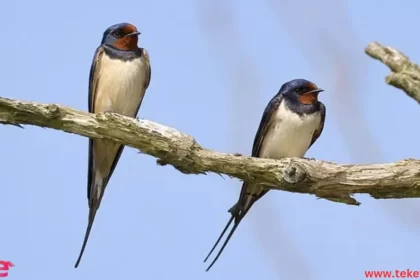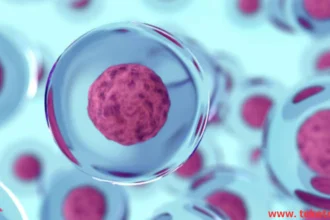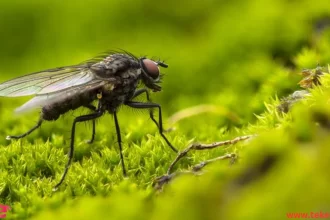The Giant Pacific Octopus is one of the most impressive marine animals due to its strange shape, lifestyle, and feeding methods. Follow this article to learn more about it on TekeTrek.
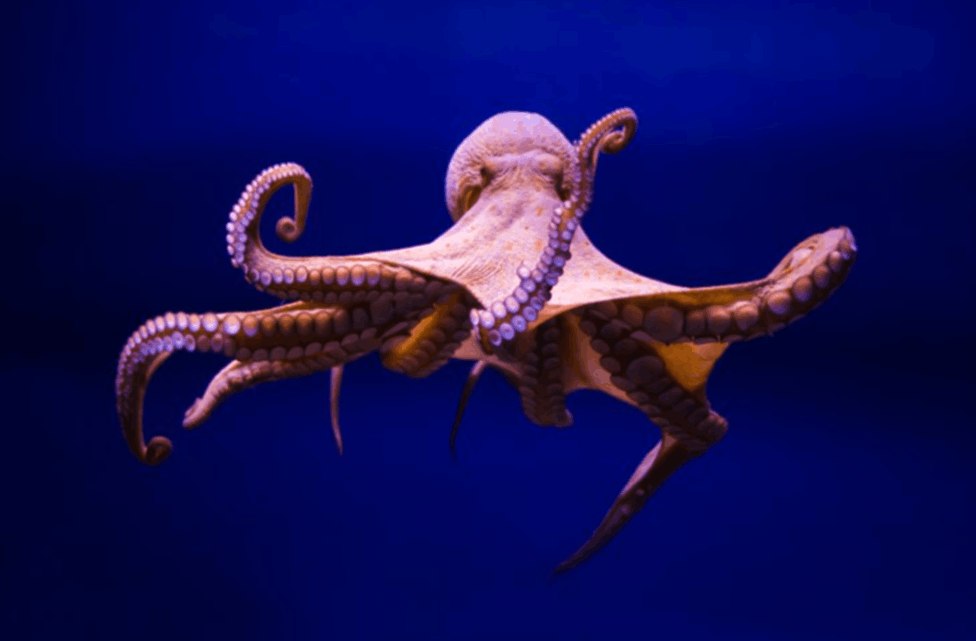
Physical Characteristics
- The Giant Pacific Octopus belongs to the Animalia kingdom, Mollusca phylum, and Cephalopoda class. It is the largest species of octopus. Typically, the Giant Pacific Octopus is reddish pink with a delicate vein-like pattern when seen up close, and the pink fades to white on the underside of the arms.
- Anatomy: Like all octopuses, the Giant Pacific Octopus is a mollusk and an invertebrate without bones, with a soft body. Its shell has been reduced to two small plates that support the head muscles, in addition to a strong beak resembling a parrot’s.
- Arms and Senses: The Giant Pacific Octopus has eight arms covered with suction cups, providing a strong grip, as well as taste and smell senses. The arms can stretch from 2 to 4 meters from tip to tip.
- Hearts and Brains: Besides eight arms, the octopus also has three hearts and nine brains. Two of the hearts pump blood to the gills, while the third circulates blood to the rest of the body. The octopus uses one central brain to control its nervous system and a small brain in each arm to control movement. Octopuses, including the Giant Pacific Octopus, have blue blood due to a copper-rich protein called hemocyanin in their bloodstream, which is effective in transporting oxygen in cold ocean environments.
Giant Pacific octopus habitat
The Giant Pacific Octopus can be found throughout the Pacific Ocean, from Korea and Japan to the coasts of Canada, the United States, and Mexico. It lives in the cold waters of the Pacific Ocean at temperatures of 60 degrees Fahrenheit or colder, in both shallow waters and at depths of up to 1500 meters or more. It is a solitary animal that spends most of its life alone.
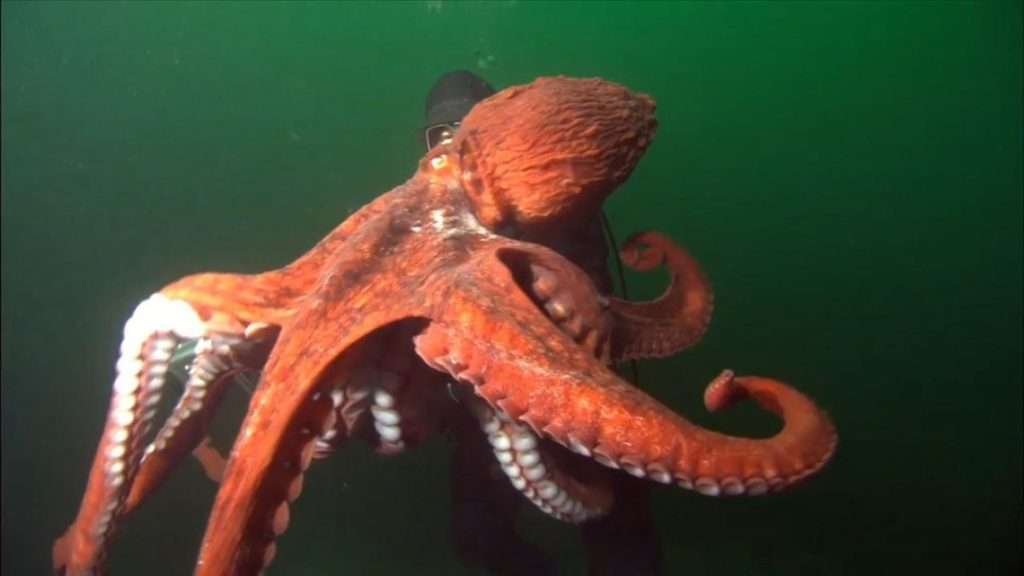
Giant pacific octopus lifespan
The Giant Pacific Octopus has a long lifespan for octopuses, ranging from three to five years. Generally, octopuses do not live more than a year. The Giant Pacific Octopus lives a solitary life until the end, when it seeks a mate, reproduces, and then dies shortly after.
Giant Pacific octopus diet
The adult Giant Pacific Octopus is a carnivorous and stealthy hunter that eats a wide range of seafood and crustaceans, most commonly crabs, clams, and other mollusks. It ambushes its prey using camouflage, propulsion, and the strong grip of its eight arms. The octopus then returns to its rocky den to settle down and enjoy a satisfying meal.
Reproduction
Giant Pacific Octopuses live for only four to five years in the wild, but they are still considered one of the longest-living octopi’s species. Octopuses usually die shortly after breeding. After mating, the female lays up to 74,000 eggs or more in a deep den or cave and stays there for seven months to watch over them. During this time, the devoted mothers will not venture out for food, and shortly after the young hatch, the mother dies. This behavior makes it difficult to determine the population numbers of the Giant Pacific Octopus.
Self-Defense
To protect themselves from predators, Giant Pacific Octopuses use camouflage and color change, as well as their strong arms for defense.
Giant pacific octopus size
Giant Pacific Octopuses can grow to a span of 9 meters from arm tip to arm tip and weigh 20 kilograms.
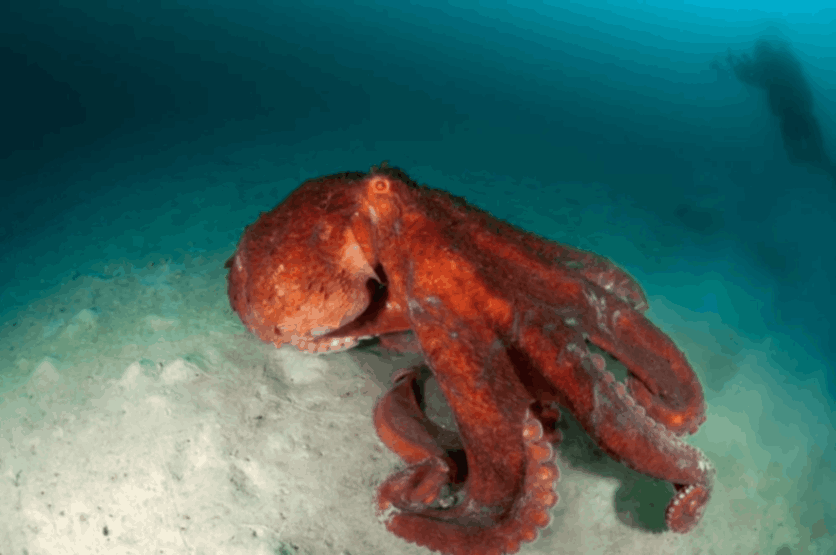

The most important frequently asked questions about the giant Pacific octopus
- How venomous are giant Pacific octopuses?
Its bite contains poison.
- Can a giant Pacific octopus survive out of water?
An octopus can survive without water for a short period.
- Does anything eat the giant Pacific octopus?
Yes, seals, sea otters, sharks and big fish.
- How do giant blue ocean octopuses protect themselves from predators?
Through camouflage and color changes, it can also use its powerful arms to defend itself.
- How big is the giant Pacific octopus?
Giant Pacific octopuses can grow up to 9 meters across from arm to arm and weigh 20 kilograms.
- What is the habitat of the giant Pacific octopus?
The giant octopus is found abundantly along the Pacific coast, from Southern California northward to Japan and then Alaska
- What does the giant Pacific octopus feed on?
The young giant octopus feeds on dead animals, while the mature giant octopus feeds on crustaceans, shrimp, crabs, scallops, oysters, various types of mollusks, flat fish, red fish, and small octopuses.
- How long does a giant octopus live?
It lives longer than other species, the male reaching four years and the female five years
- What distinguishes the giant octopus?
The giant octopus is known for its intelligence and acumen, and tests have revealed its ability to solve puzzles, use tools, and perform simple tasks
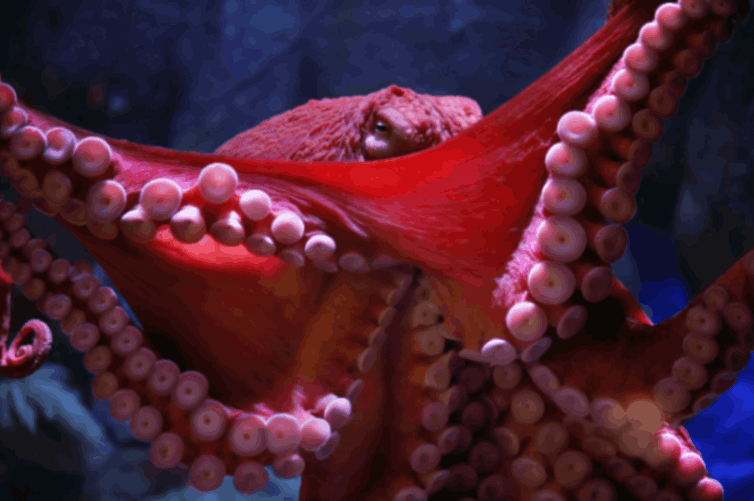

In conclusion, although these octopuses are still commercially hunted in North America and Japan for food and bait, their populations have so far shown natural resilience. We hope we have provided you with valuable information about the Giant Pacific Octopus.


